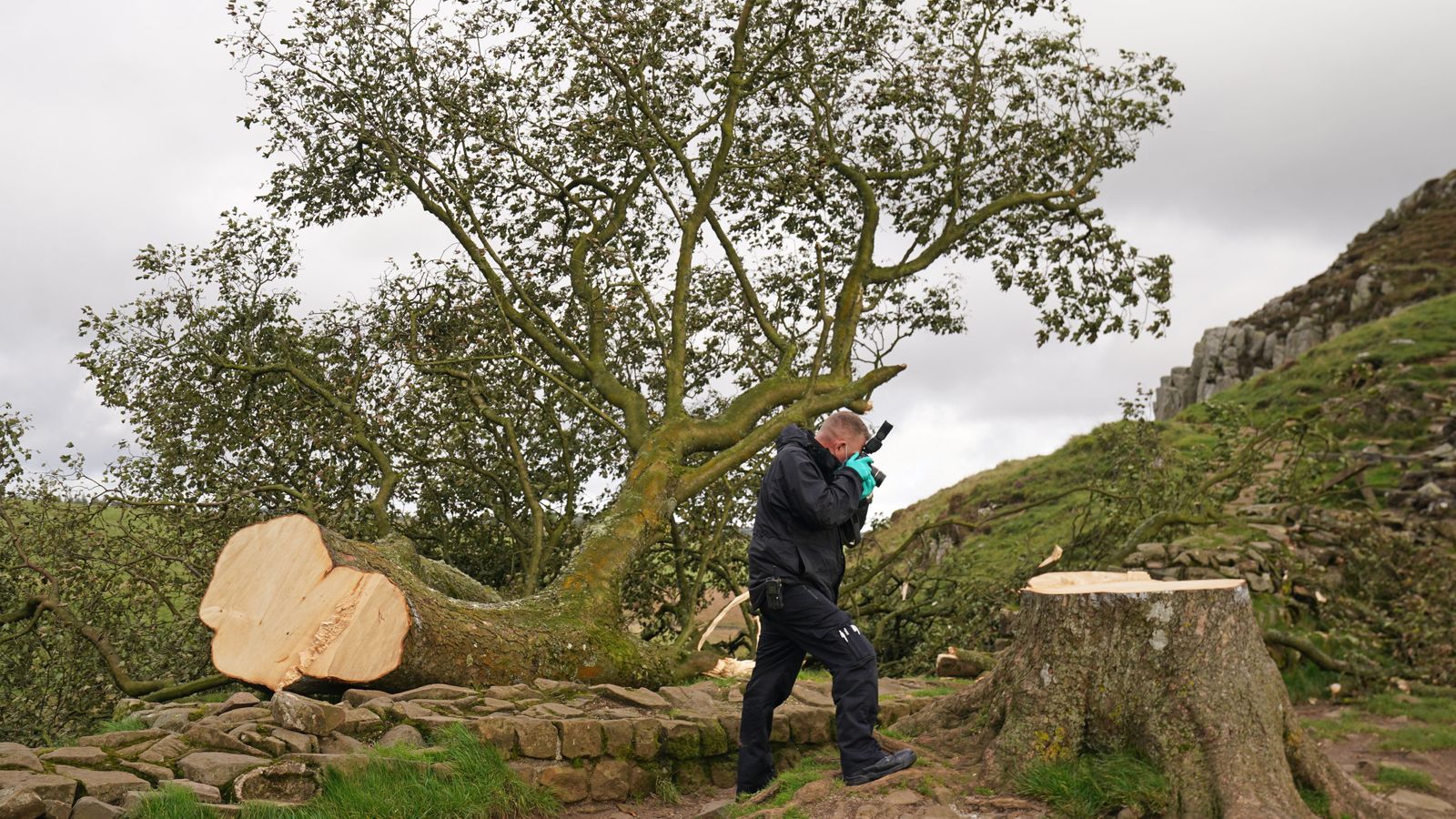The National Trust has said there are “positive signs” new descendants can be grown from seeds and cuttings taken from the felled Sycamore Gap tree.
The 200-year-old tree was cut down in Northumberland National Park overnight between 27 and 28 September in what police believe was a deliberate act of vandalism.
Teams from the National Trust collected material at the scene from which they hoped could be “viable for propagating” – or to produce new saplings and trees directly from the Sycamore Gap.
Officials said they are also “hoping” the trunk of the original tree could still regrow – but it could be three years before they know whether this is a possibility.
‘We need to be patient’
Andy Jasper, who is director of gardens and parklands at the National Trust, said: “After discovering the felled tree, our teams were quickly on the scene to collect material that would enable us to propagate from the tree.
“This work is taking place in our specialist rare plant propagation nursery and although this wasn’t really the right time of year to do this work, we are encouraged by positive signs of life, and are hopeful that over 30% of the mature seeds and half of the cuttings will be viable, which means we can hopefully grow new descendants from the tree in the future.
“Over the next year, we’ll be doing all we can to nurture the seeds and cuttings, in the hope that some will grow into strong, sturdy saplings – providing a new future for this much-loved tree.
“We are also hoping that the trunk of the original tree will regrow, but it could take up to three years before we know if this is possible.
“As with many things in landscape restoration, we need to be patient and take the time to let nature do its thing.”
Please use Chrome browser for a more accessible video player
Read more on Sky News:
Taylor Swift crowned Time’s Person of the Year
Boris Johnson apologises at COVID inquiry
There was anger from across the globe when the tree’s demise was discovered.
It’s position next to Hadrian’s Wall – which was damaged by the tree’s fall – was world famous and featured in the 1991 Hollywood blockbuster Robin Hood: Prince Of Thieves.
The tree was also popular with photographers and artists and was a frequent destination for tourists and hikers.






